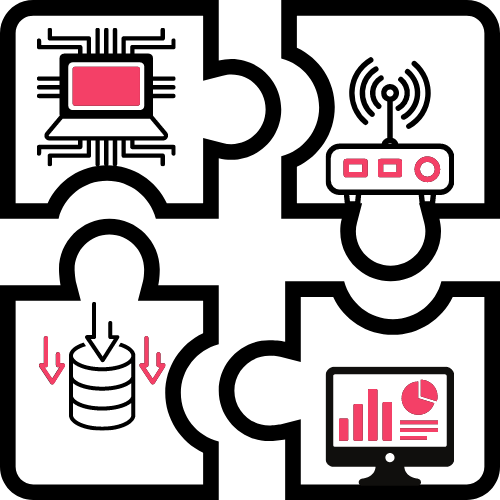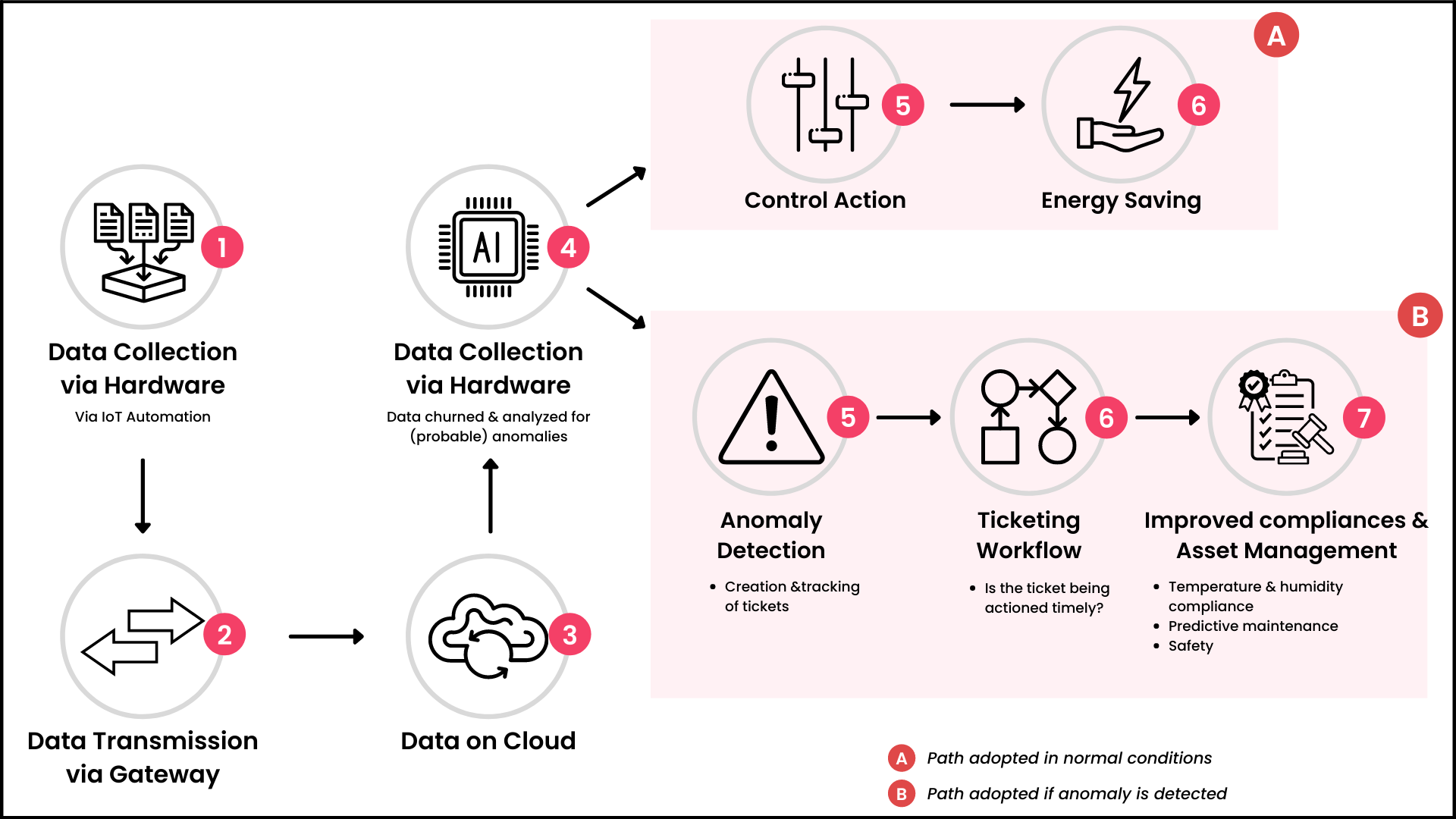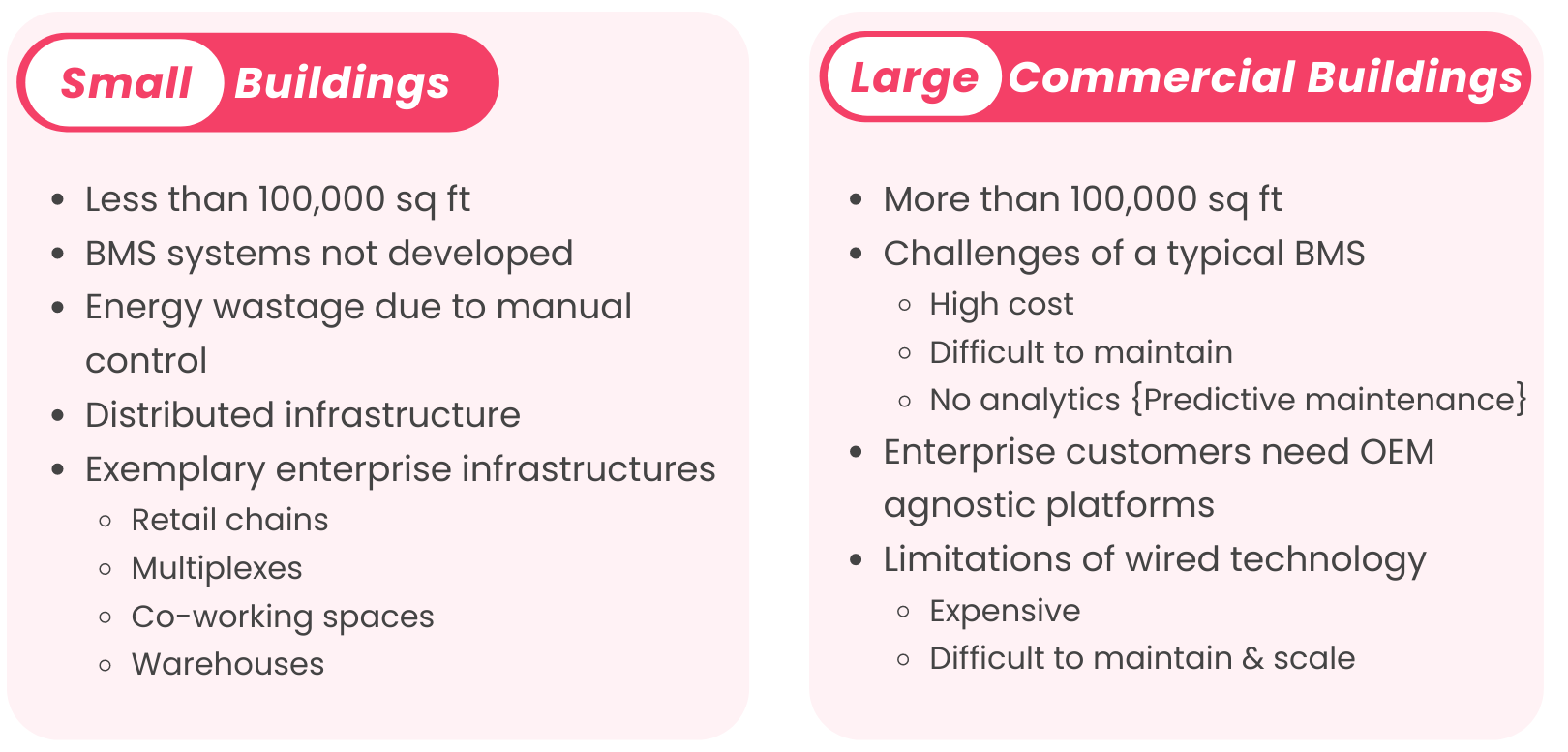Keep up with the latest IoT-based building automation, and follow us on LinkedIn!
According to the UNEP report, “buildings use about 40% of global energy, 25% of global water, and 40% of global resources, and they emit approximately 1/3 of greenhouse gas emissions.” But buildings also have the greatest potential for significant energy savings and GHG emission reductions, while also increasing business profitability, by implementing IoT-powered asset and energy management solutions.
Types of buildings and associated challenges
Traditional energy saving approaches in buildings
Retrofits and automation are two common approaches that are only partially effective.
- Retrofits: Swapping outdated technologies such as halogen lights for LEDs, replacing chillers and AHUs, and so on. These solutions are not always practical and are quite CAPEX intensive.
- Building Management System (BMS): This solution also has CAPEX challenges, which is why BMS adoption in India is so low as compared to the west. There is ROI realization of over 3 to 5 years if any such discussions are even there between the building owner and the BMS provider at all. Furthermore, such systems are intended for large commercial buildings, ignoring the small infrastructures.
Internet of Things (IoT) and its Features
The Internet of Things (IoT) refers to a system of interrelated, internet-connected objects that are able to collect and transfer data over a network without human intervention. It’s safe to say that IoT is going to have its root in almost every aspect of businesses, if not already.
But why is the world moving toward IoT-based building management? Let’s explore:
Hardware Light & Software intelligent
On the one hand, traditional building automation systems are quite substantial, making them costly and difficult to implement. In contrast, IoT-powered systems are hardware-light and software-intelligent solutions that contribute to cost-effectiveness and ease of deployment.
Wireless Technology

Wiring made traditional building management systems difficult to use and scale. Meanwhile, IoT provides wireless technology powered by wireless mesh, such as Google’s OpenThread, Zigbee, LoRa, and others, that eliminates the need for wiring.
OEM & Device Agnostic

IoT solutions are OEM & device agnostic, which means they are compatible with any infrastructure that consists of assets and equipment from different brands or technological eras.
Distributed Architectures

In a traditional building management system architecture, DDCs are networked together and link up to the BMS room. IoT architectures, on the other hand, employ a distributed architectural approach in which the gateway controller is independently connected to the internet and communicates directly with cloud servers. These distributed architectures contribute to the system’s ease of deployment and management, along with cost-effectiveness.
Analytics Powered

IoT-based systems provide actionable insights in a cost-effective manner via AI/ML-based cloud analytics. One of the smartest use cases of IoT powered data analytics in the asset management space is predictive maintenance powered by fault detection and diagnosis.
Shorter ROI Periods

By leveraging all of the aforementioned features, IoT-based asset and energy management solutions for various properties provide significantly shorter ROI periods (12-18 months) than traditional building management systems (3-5 years).
How are energy savings delivered by IoT?
On a fundamental level, there are two aspects when it comes to energy savings via an IoT system, i.e., Monitoring (Analytics) and Controlling (Automation).

When it comes to IoT-based building management, analytics is more than just data tables and charts; it’s also actionable. The data is collected via IoT sensors and then delivered to the cloud for AI/ML-based data analytics. FDD, or fault detection and diagnosis, is a popular use case of such smart analytics. Herein anomalies in the system are identified, for instance, abnormal refrigeration duty cycling or increased vibrations in an HVAC system, which can indicate component failure. When such abnormalities are discovered, digital ticketing workflows take over, and tickets are automatically generated and assigned to the appropriate team for rectification. This results in improved compliances and smoother operations of the complete building system.
Automation, on the other hand, can save energy by directly controlling certain systems, such as scheduling of HVAC, lighting, etc., and also actuation & modulation of building assets such as VFDs, chilled water valves, and other systems.
Buildings require a tremendous amount of energy, much of which is wasted. IoT powered energy and asset management solution can avoid such wastages with quick ROI by providing the facility management team visibility into the energy consumption and wastages. Automation, on the other hand, reduces the risk of human error while also improving the efficiency of building assets and equipment.
Every industry and building type within those industries faces its own set of building management challenges, ranging from energy management to critical system automation. Allow us to assist you by better understanding your problems and discussing potential solutions. Talk to our experts.
Keep up with the latest IoT-based building automation, and follow us on LinkedIn!


